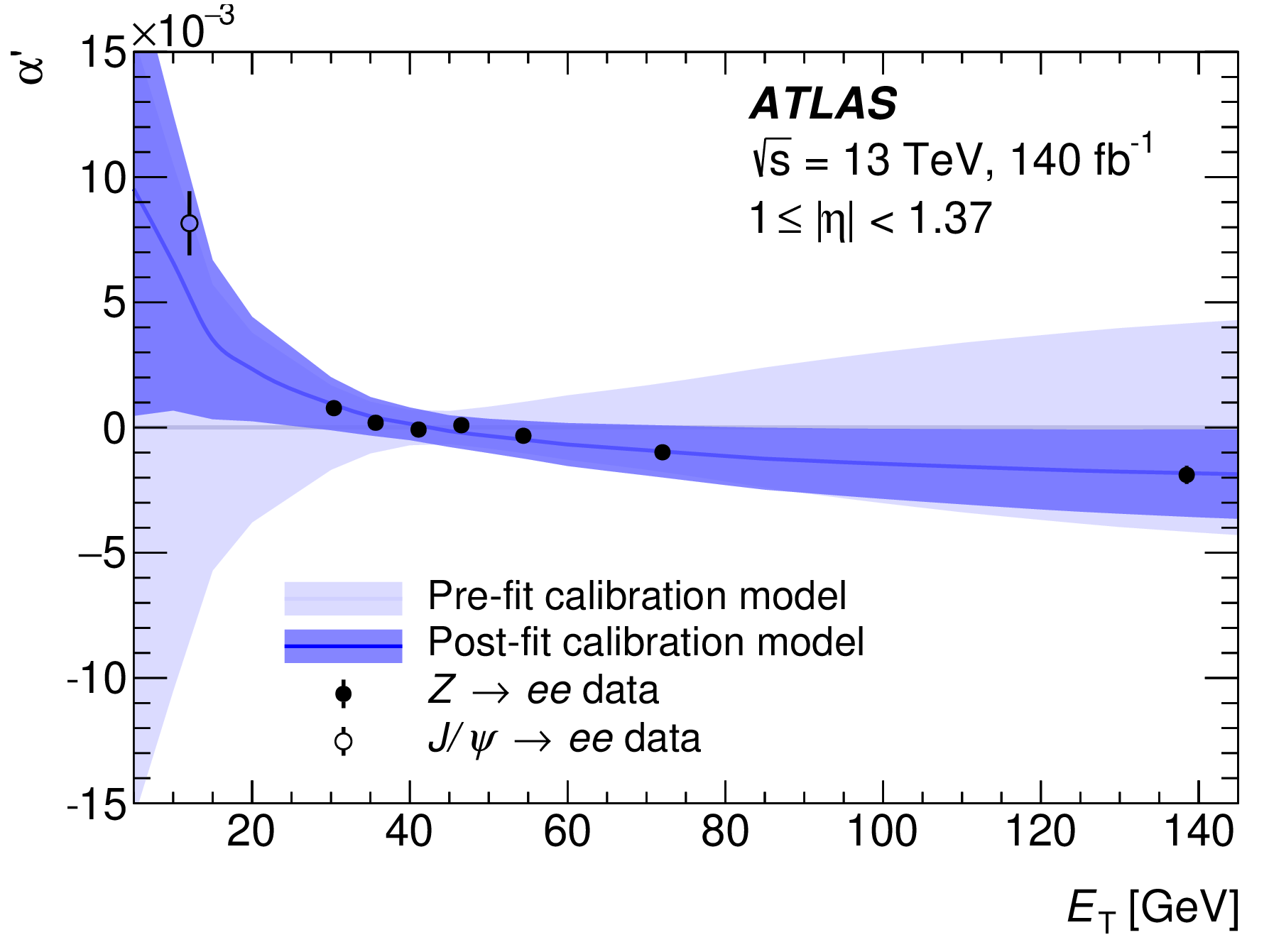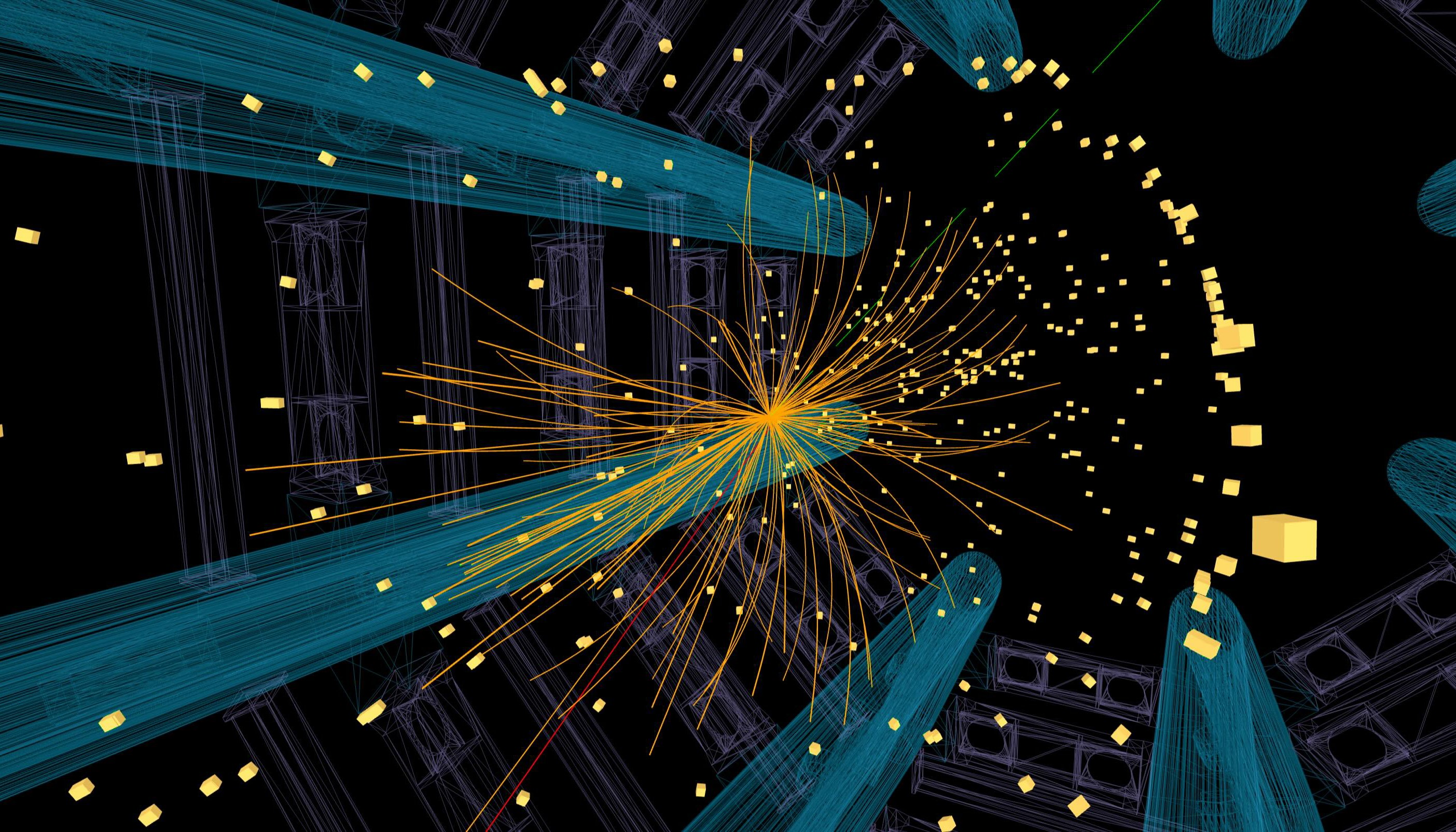ATLAS highlights from ICHEP2016
10 August 2016 | By

The International Conference on High Energy Physics (ICHEP) wraps up its 38th edition today in Chicago. For ATLAS, it brings to a close an intense period of analysis. The collaboration presented 64 new sets of results at the conference, ranging from detector performance studies to measurements of Standard Model processes to searches for new physics. All in all, a rather stellar turnout.
“This year has been pretty amazing, both for the LHC and for ATLAS,” says Dave Charlton, ATLAS Spokesperson. “The accelerator has come on with fantastic performance – much improved over last year, which was the commissioning year. At times, we’ve been collecting data at a rate which is above the design luminosity of the LHC.”
This excellent performance gave ATLAS physicists plenty to work with for ICHEP2016. Results incorporated the most current ATLAS data available, with some examining data just 2 weeks old. “People have been working night and day to make sure we have good quality data that is well understood, to produce high quality physics results,” says Charlton. “It’s a big challenge to get data ready so quickly, but the collaboration rose to the occasion.”
A few ICHEP2016 highlights are explored below; find the full list of ATLAS 2016 summer conference results here.

Studying the Higgs boson
Since its discovery in 2012, the Higgs boson has inspired a great deal of study and speculation. While Run 1 of the LHC allowed ATLAS to measure its mass and spin, there remain a number of questions to explore. Could the Higgs be used as a probe for new physics? Could it help us refine our understanding of other particles?
Answers to some of these questions were given on Thursday, 4 August, as the ATLAS experiment presented the results of its Run 2 Higgs search. Examining Higgs decays into two photons (H→γγ) and four leptons (H→ZZ→4l), the now-familiar Higgs “bump” reappeared. Its combined statistical significance is approximately 10σ - well beyond the 5σ threshold for observation. Find out more in ATLAS observes the Higgs boson with Run 2 data.
ATLAS physicists have also continued their search for “ttH production”, a rare process where a top quark either emits or absorbs a Higgs boson. Observation of ttH production could provide new insight into the Higgs mechanism and also allows for new examinations of how the Higgs interacts. New ATLAS measurements show the experiment is closing in on ttH production, as the probability that the observed results would occur purely by chance is 3 in 1000 (corresponding to 2.8 sigma). See Hunting the origin of the top quark’s mass to learn more.

Exploring the Standard Model
ATLAS also presented several important measurements in the precision physics domain, including new measurements of the WW and WZ production cross-sections. Measurements of “diboson” production can provide additional insight into the Standard Model. In particular, they can help physicists to understand how W and Z bosons interact with themselves and with each other. ATLAS has performed measurements of diboson production using data from 13 TeV proton-proton collisions that began in 2015. The WW cross-section was found to be about twice as large at 13 TeV as at 8 TeV, in agreement with theoretical predictions. Learn more in Double the bosons, double the excitement.
Looking for new physics from every perspective
The ATLAS experiment continues to widen its search for physics beyond the Standard Model. ATLAS presented its latest report on the search for Supersymmetry (SUSY), one of the most popular “new physics” theories. According to SUSY, there is a host of undiscovered new particles out there – at least one for every known particle – some of which may even be responsible for the enigmatic dark matter.
While the ATLAS results have, so far, been consistent with Standard Model predictions, both theorists and experimentalists alike are excited for what’s to come. As ATLAS searches cover a wide range of decay modes, a multitude of supersymmetric extensions are being tested at once. Sharp eyes are on the look out to see which – if any – of these will prove a winner. Find out more in Further progress in the quest for SUSY particles and Searching for new phenomena in final states with missing momentum and jets.
One of the most direct ways to search for the unexpected is to look for new particles, often with multi-TeV mass. These heavy particles are featured in beyond the Standard Model theories and could be produced by the LHC. The ATLAS experiment cast a wide net in search of these new particles, presenting results of searches in most of the decay modes of the W, Z gauge bosons and the Higgs boson. While no significant excess was found, further constraints have been put on several theoretical models, bounding the mass and cross-section of new particles. Read Hunting for new physics with boosted bosons to find out more.

Di-photon resonances
Some of the most anticipated news from ICHEP2016 was the status of the “di-photon bump”. In 2015, in the first 13 TeV proton-proton collision data, the ATLAS collaboration observed more events than expected around the 750 GeV mass window. The early result triggered lively discussions in the scientific communities about possible explanations in terms of new physics. However, given the modest statistical significance from 2015, only more data could give a conclusive answer.
At the mass and width corresponding to the largest deviations from the background-only hypothesis in the 2015 data, no large excess is observed in the 2016 data. This suggests that the observation in the 2015 data was an upward statistical fluctuation. While disappointing, the lack of a signal in the 2016 data does not come as a surprise. With the large number of searches for new particles that ATLAS performs, we are guaranteed to occasionally see excesses in some regions of some analyses purely from statistical fluctuations. Find out more about the result in High-mass di-photon resonances: the first 2016 ATLAS results.
And beyond
While ICHEP2016 may have come to a close, it remains an exciting time for ATLAS. As the LHC continues its stellar performance, the ATLAS experiment is looking forward to another 8 to 9 weeks of proton-proton collisions in 2016. “There’s a lot more data to come,” concludes Charlton. “We are really just starting the exploration at 13 TeV.”
Links:
- Updates: Find all the ATLAS ICHEP updates – including physics briefings and blog posts – using the ICHEP2016 tag.
- Facebook Live: Check out live interviews with members of the ATLAS Collaboration – including Spokesperson Dave Charlton and Physics coordinator Marumi Kado – on the ATLAS Facebook page.
- Results: Find the full list of ATLAS 2016 summer conference results here.



